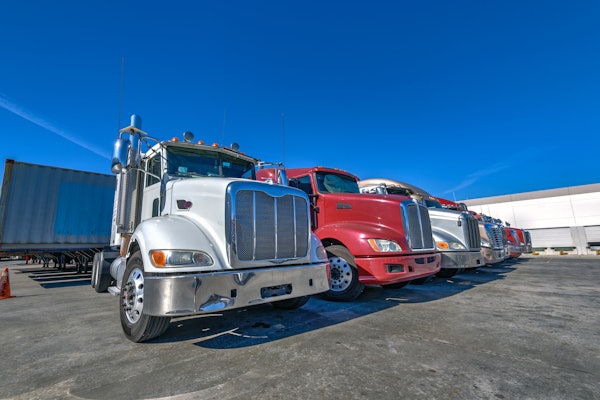Most North American engine manufacturers have announced that they will use selective catalytic reduction (SCR) to curb oxides of nitrogen (NOx) emissions, to comply with more stringent emissions standards set forth by the Environmental Protection Agency for 2010.
As you know, engine manufacturers are relying on exhaust gas recirculation (EGR) to reduce NOx for 2007 emissions regs, but they’ll need a little something extra to meet 2010 standards.
Unlike EGR, today’s SCR – which already is in use in Europe – injects a urea/water mixture from a separate vehicle-mounted tank into the exhaust, upstream of a catalyst, reducing NOx to its nitrogen and oxygen components. A DPF still is needed to cut particulate matter (PM).
However, there have been concerns with SCR on this side of the pond, such as additional on-vehicle tankage and weight, and, more importantly, an infrastructure for obtaining urea. An infrastructure for AdBlue, the European name for the urea additive, already is in place there – where it reportedly can be found at some 800 fueling stations.
If Benecor has anything to say about it, the same will be true here in time for ’10. The company unveiled a design concept for above-ground urea storage dispensing units at this year’s annual meeting of the Technology & Maintenance Council (TMC). The above-ground dispenser features an insulated and heated design to ensure urea quality (the substance freezes at about 11 degrees Fahrenheit). In addition, the dispensers include overfill protection, level sensors, leak sensors and telemetry features to track the onboard supply of urea on vehicles.
Benecor will offer two dispenser models: one equipped with a commercial point-of-sale system for retail applications, and a fleet model geared for use at fleet home-base locations. The company has installation plans for various locations, including truck stops, fleet facilities, diesel fueling stations and OEM dealerships and distributors.
In case you don’t think the company is serious, you should know that Benecor is involved with stakeholder groups through the Engine Manufacturers Association, Auto Alliance, NATSO (North American Truck Stop Operators) and the TMA (Truck Manufacturers Association). The hope is to define solutions to the urea infrastructure challenge. Moreover, the company has worked for four years in the early development and design of dispensing solutions with a major truck engine OEM. The company also plans to supply services and packaging products for small quantities of urea.
Meanwhile, a different spin on SCR is being developed by Eaton Corp. According to Vishal Singh, marketing and business development manager for new technologies at Eaton’s Truck business unit, “We have proposed an aftertreatment system that combines a fuel dosing unit, fuel reformer catalyst, a Lean NOx trap (LNT) and an SCR catalyst in series to scrub NOx from the system.” While most proposed SCR systems use urea as a means of carrying ammonia – the active ingredient in urea needed to catalyze the NOx – Eaton’s system generates its own, onboard. The result is the elimination of urea distribution and infrastructure, and onboard tanks.










